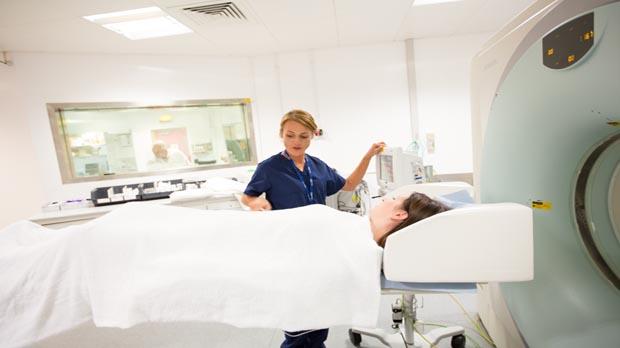
Around 1 in 5 people diagnosed with cancer in the UK take part in a clinical trial.
This study assessed a tool that analyses photographs of moles, to see if it can identify melanoma skin cancer.
The study was open for people to join between 2017 and 2018. The team published the results in 2019.
Melanoma is a type of skin cancer. When this trial was done, specialist doctors diagnosed melanoma by taking a biopsy of a mole. They looked at the cells under microscope.
But a lot of moles are not cancer, they are benign. So a lot of people were being referred to specialist clinics for biopsies who didn’t have cancer.
Researchers hoped they could reduce the number of people having biopsies. They developed a tool (an algorithm) to help them do this. It is called the Melanoma Image Analysis Algorithm, or MIAA.
People taking part in this study had a biopsy as usual. The research team also used the MIAA algorithm to analyse photographs of their moles.
The study team compared the results of the photo analysis with the results of the biopsy. They wanted to see if the algorithm could accurately identify melanoma skin cancer.
The main aim of the study was to see how well the algorithm works.
Study design
This trial was for people with a mole that doctors thought could be melanoma skin cancer. Everyone taking part had their mole assessed in 2 ways:
Results
A total of 514 people joined this trial. The specialist doctors took 551 biopsies. And the algorithm analysed 1,550 photos.
The results showed that there was a similar level of accuracy from the algorithm and the specialist doctors.
More detailed information
There is more information about this research in the reference below.
Please note, this article may not be in plain English. It has been written for health care professionals and researchers.
Journal articles
Assessment of Accuracy of an Artificial Intelligence Algorithm to Detect Melanoma in Images of Skin Lesions
M Phillips and others
JAMA Network Open, 2019. Volume 2, Issue 10, Article e1913436
Where this information comes from
We have based this summary on the information in the article above. This has been reviewed by independent specialists ( ) and published in a medical journal. We have not analysed the data ourselves. As far as we are aware, the link we list above is active and the article is free and available to view.
) and published in a medical journal. We have not analysed the data ourselves. As far as we are aware, the link we list above is active and the article is free and available to view.
Please note: In order to join a trial you will need to discuss it with your doctor, unless otherwise specified.
Dr Ioulios Palamaras
Skin Analytics Limited
If you have questions about the trial please contact our cancer information nurses
Freephone 0808 800 4040

Around 1 in 5 people diagnosed with cancer in the UK take part in a clinical trial.